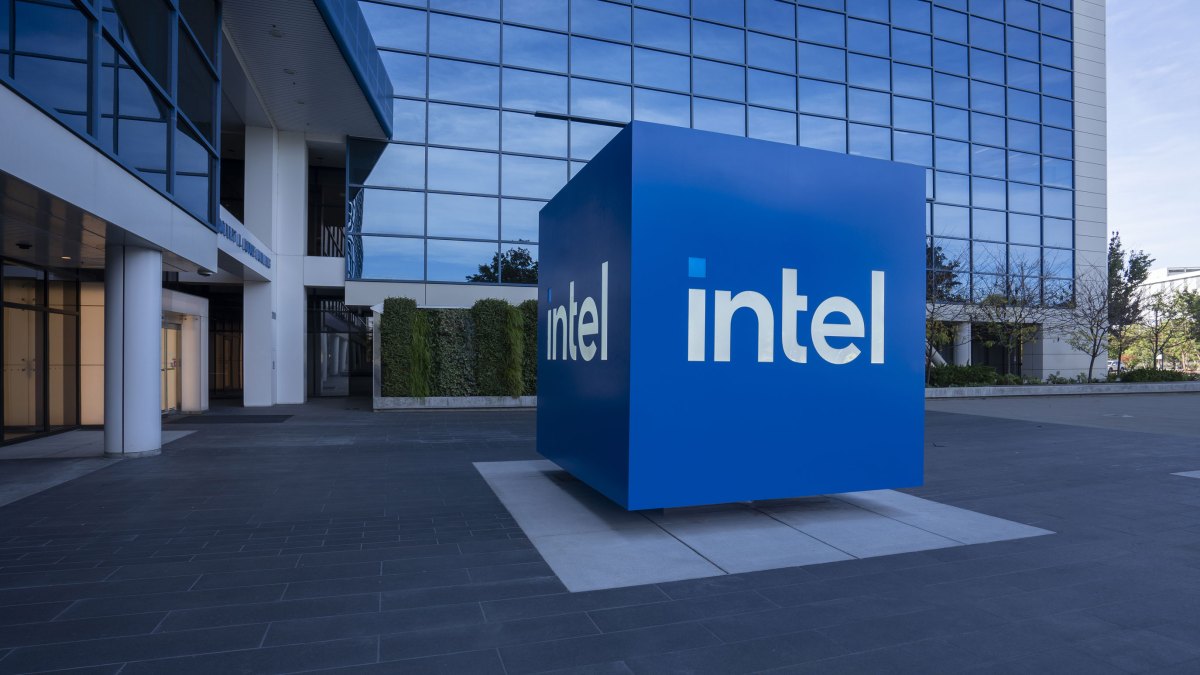The essential guide to managing small business cash flow
By Ben Lobel on Small Business UK - Advice and Ideas for UK Small Businesses and SMEs The post The essential guide to managing small business cash flow appeared first on Small Business UK.

By Ben Lobel on Small Business UK - Advice and Ideas for UK Small Businesses and SMEs

As anyone who has started their own company can attest, your cash position can be extremely tight as a small outfit. Whether you have significant financial backing or you are bootstrapping, you must make sure that your command of the company’s finances is second to none. If you don’t have an eagle eye on expenditure and credit control, and haven’t accounted for unexpected costs arising, you can surely expect your company to run out of money and fail.
We always find that the best advice comes from the people who have experienced the highs and lows of running a business first hand. In this case, we speak to five companies that experienced real cash flow pressures that threatened their business. Some have been right to the brink of failure, showing the utmost resilience to turn their fortunes around and make their business a success. For others, a few tweaks here and there to their operations ensured a more comfortable cash buffer moving forward. All have helpful tips to pass on about keeping your finances in check.
We hope the stories in this guide, in association with Fleximize, can inspire you in your own business journey and help you manage your cash position better on the road to success.
Quick tips on mastering payment terms

Peter Searle, small business adviser at national consultancy network Business Doctors, reveals how companies can control their payment terms better and maximise the chance of prompt payment.
Late payers can cause a great deal of distress to businesses of all sizes, but it is SMEs that can be hardest hit. Late payment adds a layer of uncertainty to trading and can cause the kind of cash flow crisis that we could all do without. Research from the Asset Based Finance Association (ABFA) found that clients of small companies take on average 72 days to pay an invoice, with micro-business owners waiting six weeks longer to be paid than larger firms. Seven out of ten small business owners cite cash flow problems as the biggest threat to their company, with late payment being one of the most common causes. So what can be done?
Assess your attitude to payment risk
The first step you need to take is to determine the level of risk on payments you can take as a business. If the answer is ‘no risk at all’ then payment in advance is the solution. This can restrict your market somewhat, especially in the B2B world where companies often expect to pay on account.
Early payment discounts might be attractive to some businesses where profit is the driver, and will help you to collect your cash faster. But extended terms may still be more favourable to companies for whom cash generation is key.
Ultimately, a clear payment policy that reflects your risk tolerance and aligns with your market’s needs will help you create a sustainable cash flow, supporting your business growth while safeguarding your financial stability.
Know who you’re dealing with
Be selective about who you work for and credit-check new prospects before starting to do business with them. Turning down potential new contracts is not easy and needs a steely resolve, but if a company’s credit history looks less than impressive, you could be saving yourself future heartache and cash flow problems. It could also serve you well to explore the credit history of key individuals within the company. Have they ever been associated with other organisations that have gone bankrupt? Creditworthiness should be monitored throughout the relationship with a customer company, as a change may signal a payment issue looming, and you are best prepared when you are forewarned.
Make it watertight
Assuming the customer’s history suggests they can pay, the next step is to establish the terms and conditions under which you will be paid. It is a lot easier to set expectations at the beginning of a relationship and make sure that you do it in writing. A verbal agreement counts for nothing in court. Watertight terms and conditions establish the rights and responsibilities of both parties and can save a lot of time and money in the long run. You may find that a standard set of Ts & Cs covers everything you need to include – from payment and delivery terms to what happens if you are not paid – but depending on the nature of your business, it can often be a good investment to contract a solicitor to draw up a bespoke set.
“When you submit an invoice, ask if there is any reason why it will not be paid on time”
The human touch
Having entered into a contract, good communication and building relationships with those involved in the payment chain are essential. Establishing strong rapport fosters trust, making it less likely for people to delay payments.
When you submit an invoice, proactively ask if there are any reasons why it may not be paid on time. This not only shows that you care but also opens the door for dialogue about any potential issues. People generally don’t like to go back on their word, and personal connections create a sense of accountability.
By treating payments as a mutual agreement grounded in trust, both parties can foster smoother transactions and maintain a healthier cash flow.
The bad apple
If you follow the points above, issues with payments will start to reduce. But there are always a few customers who will present a problem. There are several solutions, and the ones you choose will depend upon the form of contract and the size of the debt.
Funds can be recovered with the help of a claims consultant or solicitor, who will advise on the most appropriate and cost-effective method. Mediation, adjudication and arbitration are all approaches that can be used before taking the matter to the courts. Making an attempt to recover late payments using alternative dispute resolution processes before resorting to court is often stipulated in contracts.
The key in all cases is to know who you are dealing with, agree how payments will be made, keep to those agreements, build relations and, if all else fails, seek advice early on.
The Snaffling Pig Co

Nick Coleman, co-founder of The Snaffling Pig Co, discusses the cash flow lessons he learned from his previous company, which at one point was given just eight weeks of trading before running out of money.
I guess I’ve always wanted to be an entrepreneur. My first proper business was Medical Supermarket, which launched in 2010 and aimed to help healthcare companies save money on everything they buy. Then, in 2014, I set myself a new challenge to launch a food brand with just £500 – it was like I wanted to prove to myself I wasn’t just a one-trick pony. Snaffling Pig was fuelled by the desire to modernise an old favourite, using quality ingredients and innovative flavours to set ourselves apart from the rest of the sector.
I can remember every single detail of the cash flow challenge I faced with Medical Supermarket. We had grown too fast and needed more working capital as a result, with not enough profit in the products to sustain that need. In July 2013, it culminated in sitting opposite my bank manager who said, ‘Boys, you have eight weeks left of trading before you’re broke.’ It was a lot to deal with, and although it wasn’t a shock, we just weren’t prepared for our journey to end. I spent the next 12 hours wallowing in self-pity as I had personal guarantees, rent commitments, 13 staff and five leased cars to think about.
If this business went under, there was a high chance I would be made bankrupt, which would mean I wouldn’t have been able to access personal credit and mortgages. I’ve never felt stress like it; I was shocked, scared and confused about how we could have let the business, which was turning over £2 million and growing each month, suddenly fail right under our noses. I felt foolish.
Tough action
The day that followed that bank meeting was the hardest day I have ever faced as an entrepreneur. In situations like these, which are so critical to the business surviving, I just knew you don’t act lightly – you cut costs hard, deep and fast. It’s like being bitten by a zombie – you don’t stick a plaster on it, you cut your bloody leg off!
I’m saddened to say that by 9am, 30 per cent of our staff were made redundant, and by 3pm, we had made cuts in nearly every single cost centre including cancelling our own salaries. When we couldn’t cut any more, we went on the sales offensive, increasing our prices by 8.5 per cent and hitting the phones hard, with all our remaining staff chasing overdue customers.
“No matter what your turnover is, if your cash flow is negative, then you don’t stand a chance”
It was unreal what a difference a day made, and the following day I had five meetings lined up with national banks to implement invoice discounting to ensure we made it past week eight. We came out of the whole situation leaner, more profitable and driven to win.
That experience taught me the valuable lesson that no matter what your turnover is, if your cash flow is negative, then you don’t stand a chance. This is something we’ve been mindful of with my second business, Snaffling Pig, and I’m pleased to say that it’s not an issue we’ve faced to date as business is thriving. I’m more focused on cash flow now than turnover or profit, and doing a quarterly review of all costs, asking, ‘Why are we paying for this?’, helps ensure that we stay lean. I hate cost creep.
Using a cash flow forecast to plan effectively
A cash flow forecast is critical to give you the visibility of what’s coming so that you can plan. We were so lucky we knew we had eight weeks, as eight days or eight hours would have meant there was no time to fix anything. You must get a detailed cash flow forecast going ASAP. Finally, get someone who understands figures to keep an eye on cash and profit. I love surrounding myself with people far cleverer than I am, and I use their skill sets to do the jobs that I struggle with. A good finance manager is so critical to a business’s success.
Smileworks Liverpool

Ed Challinor, first officer at private dentistry and medical aesthetics company Smileworks Liverpool discusses how his business became ‘cash ninjas’ after being threatened by a massive council tax bill.
Smileworks is a collective of dental professionals who came together from all over Europe with the shared aim of providing better care to patients. In less than three years we’ve grown from a standing start with only £25,000 in seed funding to turning over around £800,000 a year.
In the beginning, once we were making enough profit to invest in our first dental chair, we went to the UK Dental Show and negotiated a wonderful deal on a brand new treatment centre. Back then we’d only been in business for a year or so, and we assumed that patients would immediately start flooding through the door. I thought we’d have a wonderful list of aesthetics patients who’d come to us for Botox and filler, and that they’d surely want dentistry too.
In fact, our facial aesthetics demographic is very different to our dental one. So instead of generating a huge amount of new patients almost straightaway, we had to invest even more money into new marketing campaigns to attract dental customers.
Unforeseen expenses
With a dental chair comes the increased overhead of nurses, sterilisation equipment and a whole shopping list of items we just hadn’t thought of. Soon we were in the position of barely breaking even or even losing money on some days. Back then, the way we got out of it was simply not paying our suppliers. We explained what had happened and had a frank and open dialogue, and they were, for the most part, sympathetic. We ended up agreeing on three-month payment terms with some of the materials suppliers or sometimes to pay bigger bills off in instalments over the year.
Nobody, not even the hardest finance officer in the world, wants to see one of their suppliers fail and have to buy their equipment back, or worse get pennies on the pound in the event of insolvency. So we got through it because we addressed the problem head on. If you ignore creditors or fail to give them the whole story, they’ll panic and call in the line of credit or come back and repossess their equipment.
Another hairy experience was when we hired a bookkeeper to help us with our chaotic accounts. This was right at the beginning; we’d only been trading for eight months or so. A mixture of poor planning and misunderstandings with the bookkeeper meant that we thought that we’d been paying our council tax, but in fact the bill had been building up and up. Because we were a new business we’d obviously been given a break by the council, but one day a massive bill arrived and we couldn’t pay it.
“It amazes me how business owners wait until they can’t pay the bills before bringing out the 13-week forecast”
We tried our best to negotiate, but they threatened to send bailiffs. Charm is a useless tactic against council officials, so we had to look inside the business and at cutting costs in other areas to survive. We also did some guerrilla marketing to increase the revenue and dig ourselves out. I actually went out into the Liverpool ONE shopping area to physically drag patients into our new practice. I look back on those times and cringe.
Mastering your cash
Now, we’re cash flow ninjas. I learned soon after suffering our first few setbacks that cash is king and that growth is the biggest killer of businesses. At the end of the day, fixing your cash flow issues is, in principle, very simple. As any business person knows: reduce costs, increase profits, get better payment terms with your payables, chase down receivables and borrow. We now know our numbers inside out. I can tell you with precision what the gross and net profit margins are on each of our activities, and I constantly work to improve those ratios.
You should always run your company like you’re in a cash flow crisis. It amazes me how business owners wait until they can’t pay the bills before bringing out the 13-week forecast. I’d also advise you to go through your P&L expenses line by line and get brutal with your costs. There’s not a small business in the world who can’t cut 10 to 15 per cent off their expenses and not really feel any pain.
Attic Self Storage

Frederic de Ryckman de Betz, director of Attic Self Storage, discusses how the financial crisis hit his company’s cash flow and how he managed to save the business from the brink of collapse.
Our company, which provides self-storage to domestic and business customers, was hit hard by the financial crisis. They say a recession is a good time to start a business, but our business is largely fixed-cost, so adapting to a changing environment is challenging.
With the housing market crash, our fill rate reduced by half, and it was going to take twice as long to break even, with our cash burn rate staying higher for longer. At the same time, just as our funding requirement was clearly increasing, the banks had stopped lending. At the time, we were losing around £35,000 a month.
“We were facing a genuine solvency threat before we’d even started”
In our business, we usually offer the first four weeks of storage for free, so our revenue in our first month of trading was something like £250, and we made a loss of £38,000. We were facing a genuine solvency threat before we’d even started.
I was previously in corporate finance so drew on my restructuring skills and just knuckled down. Effective cash flow management was absolutely key. I ran a 13-week rolling cash flow forecast almost continuously for the first two years. It was a receipts and payments cash flow – dead simple, but it played a crucial role in our survival.
To avoid running short, we would move payments around, sometimes by only a day or two – but it kept us within our overdraft limit. The important thing was always to clear debt swiftly so that we could retain those emergency sources of finance for any future short-term gaps.
We also took the decision to sell a significant equity stake in the business to a third party investor. We used this additional equity to leverage some additional debt and, while that didn’t make us comfortable, it did give us just enough breathing space to keep going.
New sources of finance
Although we had the support to make it through the recession, getting the finance to grow the business was a different story. Each phase of expansion was funded through cash generated by the business and debt. When the bank’s support wavered, we turned to crowdfunding and asset finance. Eventually, in 2013, we finally started to break through and generate sufficient free cash flow and the business started to change; we went from thinking about survival to thinking about strategy and growth. We were now at a crossroads: should we remain a small independent, or should we consider further dilution to trigger growth opportunities?
Following the latter route, we have now opened our second store – a ten-minute walk from King’s Cross in central London – and there are several more in the pipeline.With Brexit and political
uncertainty globally, there is the possibility of more difficult times ahead. Our business is not recession-proof, but it is now recession-resilient. Having been hardened in the furnace of 2008- 10, we are not complacent.
An iron grip on cash
If the clouds gather, focusing on the fundamentals is critical. Cash is king. Avoid the temptation of over-trading if you’re successful. Control your costs. Make sure you limit what people can spend, and be clear and firm with people when allocating budgets. Review your supply base. If the economy slows down, your suppliers will notice. The business must generate robust KPIs and financials.
Having a good grip on the numbers will give you the information to make the right strategic decisions; and it will give you the time to figure out a plan B, if it looks like you might have a problem down the road.
Talk to your staff and work at team morale; talk to your key clients, understand where they are and work to pre-empt any reductions in business before they occur. Talk to your suppliers; try to negotiate better rates, better terms and smaller minimum order quantities. Finally, and most importantly, keep talking to your relationship manager at the bank. Clear, effective, timely and honest communication is essential. The more robust your internal reporting and financials, the better; these will give the bank the confidence that you’re on top of things.
Perkbox

Chieu Cao discusses how his employee engagement company Perkbox turned around a scary cash position by changing its business model.
Perkbox was founded in 2014, with angel investment of £350,000. We were very lean. We knew we had to analyse all our major costs, and we started in cheap-rent locations to minimise outgoings. We intended to have a strong cash position, a cushion to protect us during times of slow business. However, our early revenue model, which was based on generating leads for large businesses, wasn’t very reliable as a sole revenue channel, and of course if you don’t know when money is coming in, you are at risk of having an unstable cash position.
Our overheads were really draining our cash; we had a staff of four at the time, and not being able to get money in while you’re having to pay your salaries, rent and fixed costs was a real
struggle at the time. We were down to a few thousand pounds left in the bank, but we didn’t want to raise additional capital; we wanted to make it work without resorting to that. We accepted that that might mean going down to the wire!
While we knew we might have to explore the option of a loan to continue if we needed it, we had faith in the business and were confident that a big project would come through before we got to
that stage. We were a little scared but at the same time very stubborn; we didn’t want to give up and we knew we had to succeed. We didn’t have major concerns about what we were doing, just when we could line the projects up – it was a timing issue. Luckily, a big project did come through that allowed us to get enough revenue for a cash cushion, but I wouldn’t advise companies to run on that little cash. You should have enough runway not to be in that situation.
A new revenue model
The turning point in our business came about two years after we started. We created a second revenue model where we introduced a white-label engagement platform for large corporations. A third revenue stream was when we became an employee motivation platform, which is what we do now. We have evolved our model over the years, and this has improved revenues and our subsequent cash position, making us successful.
“Look at the costs in every little way and don’t spend money unnecessarily”
I’d say we are good at identifying market needs and testing them – asking potential customers what they want. We have a strong sales and marketing discipline because of our background and understanding of how to position ourselves well. We accepted that might mean we had to reinvent ourselves to keep going. Now our cash position is strong and we are very profitable. We have 500,000 members on our platform and thousands of businesses paying us on a monthly basis. But in order to continue growing, we have to continually innovate and improve ourselves. You need to stay willing to change and hire people who can move with the direction you need to go in. To find that type of employee is quite rare.
Know where your money is going
My advice to other businesses on managing their cash effectively is to be very clear about where your money is going, especially rent. As directors, we didn’t take salaries for two years – only our employees were paid. Look at the costs in every little way and don’t spend money unnecessarily. Negotiate hard for the best deal for your business, particularly for services that have the potential to cost you a lot of money over time.
Growing a small business, as well as being about managing costs, is also about how much risk you’re willing to take in terms of spending on extra head count and marketing. Also, how much of a buffer do you need to have to account for quiet periods? It’s a tricky balance of how much security you must have versus deploying more capital to grow the business. Achieving the perfect balance is a matter of trial and error.
Powwownow

Andrew Johnson, finance director of telecommunications company Powwownow, discusses how a razor-sharp focus on retaining a strong cash position was key to satisfying banking covenants after a loan.
The business started in 2004 when one of the founders became frustrated with the existing conferencing products on the market and thought, ‘It shouldn’t be this difficult!’ Powwownow was all about a low-cost, affordable conference call service that was accessible to the SME marketplace. The tricky bit was how to break into that marketplace. Competing with the likes of BT and gaining market share was tough, and to challenge them, the decision was made to make marketing integral to the business. That represented a large capital investment – a hurdle in the early stages because cash is key to staying afloat. But at the same time, at that stage, if you make a bit of profit you have to reinvest. Twenty per cent of revenue became the benchmark for investment in marketing.
In the early days, once the company acquired an initial customer base, it was really about maximising cash flow, looking at debtors, refinancing capital and really staying on top of receipts. These points are integral to any financial management. Also, any time you’re adding to headcount is a real commitment in the early days of a business. Using agencies instead can give you the flexibility to scale up or down depending on your cash requirements.
“We were trying to make the most of our existing infrastructure without sacrificing quality”
In 2010-11, we were looking at ways to grow faster, and there was a competitor that was operating on a similar business model. We took out a £2.5 million loan with a high street bank to buy the rival in order to accelerate growth. For the acquisition, 75 per cent of the purchase price was a loan, and the rest was cash, which we had to generate ourselves.
This process happened over a period of about 12 months, and minimising the debtor base was particularly important at the time to raise the extra cash. Sweating the assets was key; we were trying to make the most of our existing infrastructure without sacrificing quality, which came down to things like trying to extend the life of IT equipment and getting the absolute most out of staff.
Managing cash flow after an acquisition
With the loan came some strict banking covenants; we had to do a three-year business plan with a cash flow forecast, but also meet quarterly covenants to ensure we were showing that we were strong enough to sustain growth and manage repayments, which they were quite tight on, especially after the financial crisis. That was a challenging process. I remember having to make these detailed six-month cash flow forecasts together with a more generic 12-month plan. Again, it’s about knowing exactly where your expenditure is going, keeping on top of receipts, and managing supplier relationships.
If you have really good supplier relationships and stay on good terms, then when things are a little bit tight and you’re waiting for money to come in, you can buy a bit of face. Talking to suppliers and telling them you need to wait a little longer for a big customer to pay before they can be paid themselves is easier if those relationships are strong.
The company has seen a lot of revenue growth. In 2012, we were turning over £10 million; last year it was more than £20 million. That has massively helped our cash flow, clearly. Now, it’s less about being tight with cash and more about ensuring that the extra funds are being reinvested wisely.
In the past few years, headcount has increased by 10 to 15 per cent, so we haven’t massively increased our team, but we have made some key hires and got the right people into the business – hardworking, driven individuals. We now have a lean and agile team.
Tips on managing small business cash flow
The post The essential guide to managing small business cash flow appeared first on Small Business UK.






















